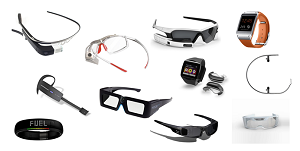Gartner, Inc. forecasts that 274.6 million wearable electronic devices will be sold worldwide in 2016, an increase of 18.4 percent from 232.0 million units in 2015 (see Table 1). Sales of wearable electronic devices will generate revenue of $28.7 billion in 2016. Of that, $11.5 billion will be from smartwatches.
increase of 18.4 percent from 232.0 million units in 2015 (see Table 1). Sales of wearable electronic devices will generate revenue of $28.7 billion in 2016. Of that, $11.5 billion will be from smartwatches.
"From 2015 through 2017, smartwatch adoption will have 48 percent growth largely due to Apple popularizing wearables as a lifestyle trend. Smartwatches have the greatest revenue potential among all wearables through 2019, reaching $17.5 billion," said Angela McIntyre, research director at Gartner. "Though the sales of smartwatches are the one of the strongest types of wearables, their adoption will remain much below sales of smartphones. For example, in 2016 more than 374 million smartphones will sell in mature market countries and in large urban areas of emerging market countries, for example, in Hong Kong and Singapore."
Table 1: Forecast for Wearable Devices Worldwide (Millions of Units)
| Device | 2015 | 2016 | 2017 |
| Smartwatch | 30.32 | 50.40 | 66.71 |
| Head-mounted display | 0.14 | 1.43 | 6.31 |
| Body-worn camera | 0.05 | 0.17 | 1.05 |
| Bluetooth headset | 116.32 | 128.50 | 139.23 |
| Wristband | 30.15 | 34.97 | 44.10 |
| Smart garment | 0.06 | 1.01 | 5.30 |
| Chest strap | 12.88 | 13.02 | 7.99 |
| Sports watch | 21.02 | 23.98 | 26.92 |
| Other fitness monitor | 21.07 | 21.11 | 25.08 |
| Total | 232.01 | 274.59 | 322.69 |
Source: Gartner (January 2016)
Fitness wearables — which include wristbands, smart garments, chest straps, sports watches and other fitness monitors — continue to increase in popularity, driven in some part by U.S. wellness programs.
"Of all the fitness wearables, sports watches will be the one product category to maintain its average retail price over the next several years," said Ms. McIntyre. "Race runners, cyclists and divers will choose sports watches over smartwatches because the user interface, capabilities and durability are tailored to the needs of an athlete in their sport. Continued advances in sensors and analytics for sports watches will bring new capabilities that bolster average retail prices."
Although the size of the worldwide wristband market was on par with the unit sales of smartwatches in 2015, looking forward smartwatches will have stronger appeal with consumers as they typically have more multifunctional devices that can track exercise. Wristband providers are experimenting with how to compete with smartwatches and take market share from the market leader, Fitbit. Examples of emerging value propositions for wristbands beyond fitness include mobile payments, access, safety, wellness and health.
